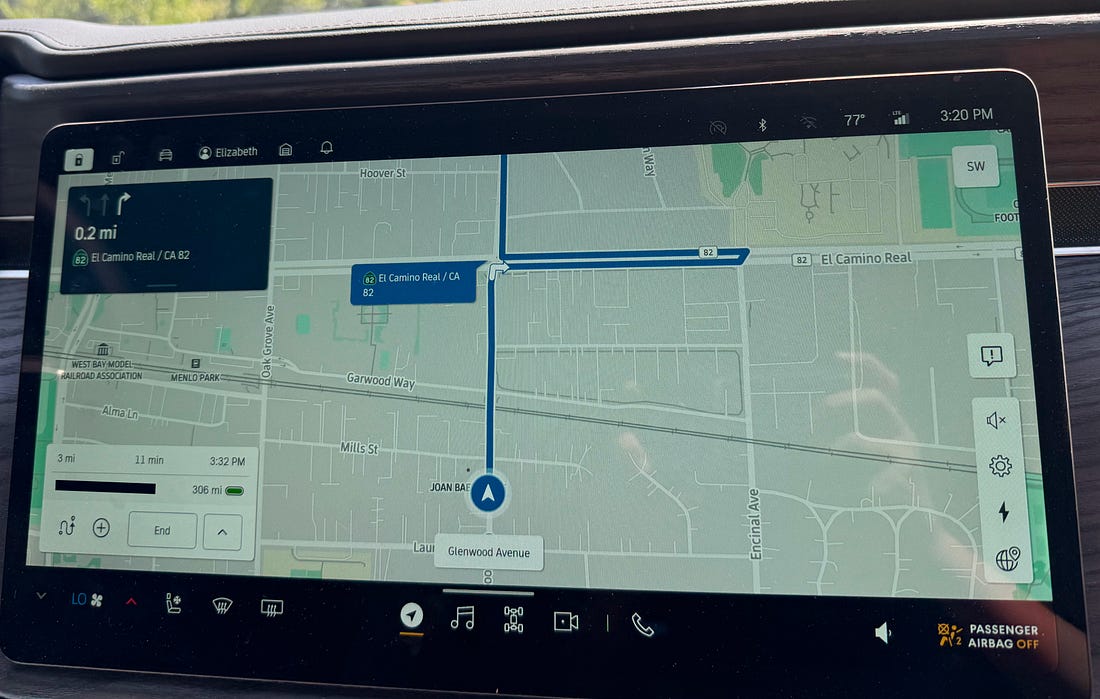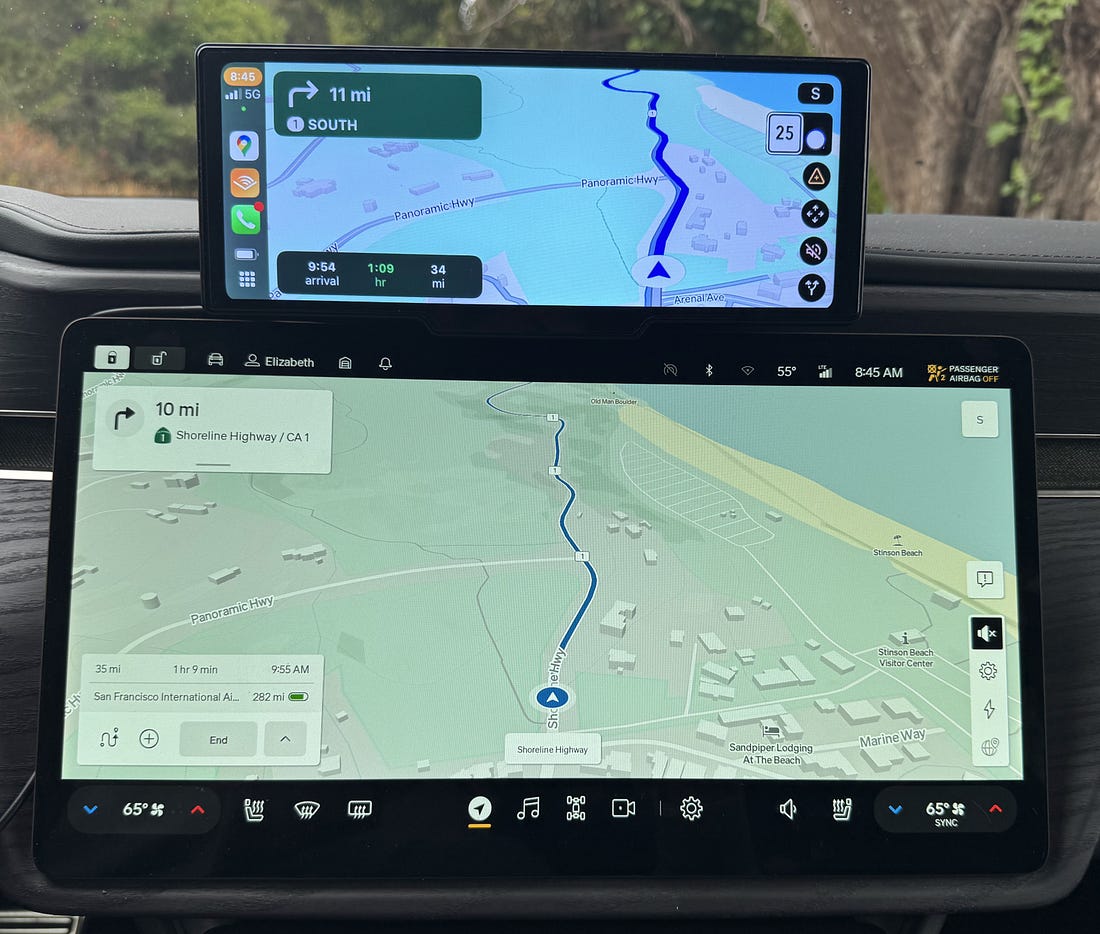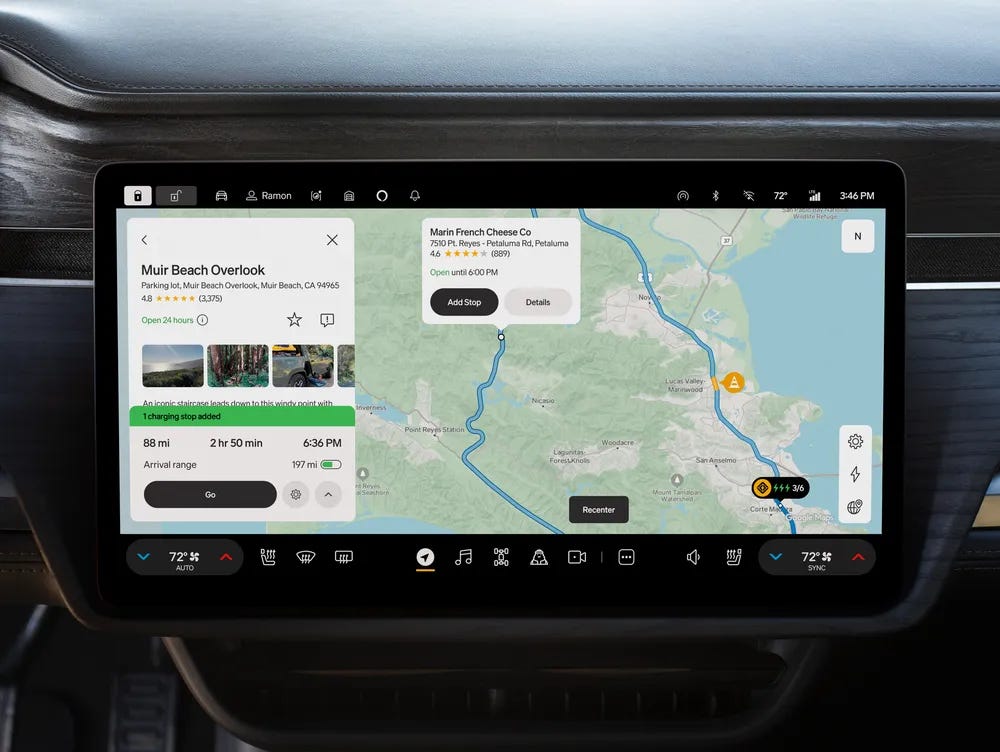Reinventing the wheel
Reinventing the wheelA real-life lesson from Rivian to focus on your core competencies and outsource the rest.I bought a Rivian R1S a little over a year ago. Despite a rocky start with some mechanical issues, I love this vehicle. It’s fast, responsive, and a blast to drive. It adds joy to our family adventures and even to mundane trips around town. But after a test drive, I hesitated purchasing one. Rivian had created its own mapping software and during our 20min demo drive, it routed us in some bizarre ways. But it was the only electric vehicle with good range that hit all the needs of our family. And maybe I was being too neurotic about their proprietary maps and navigation…so I went for it. What makes Google Maps so goodNow, it is important to mention that I use Google Maps all the time to navigate — whether to new places or just to avoid traffic on my daily routes. I have high trust in its accuracy (in the US), and can safely assume it will give me the optimal route 99% of the time. I was an early designer on Google Maps and I know the sweat and tears that went into the product over the last 20 years. You don’t build a great mapping product overnight. In addition to robust map data, honed routing algorithms, and user feedback inputs, there are so many features of Google Maps that have become indispensable, like:
Reinventing the wheelRivian is a new car manufacturer. It started deliveries of its first vehicles less than four years ago in late 2021. A lot goes into producing a car, including design, production, safety standards, battery life, performance, motors, software, etc.). So it stumped me…with all these other things, why would Rivian want to take on mapping? Especially when it wasn’t their core competency (or differentiation) and a great mapping option already existed. I assumed it likely came down to cost or maybe that Rivian prioritized EV charging station or driver screen integration over map quality? Mapping is hard. I have no doubt that the team working on Rivian maps put in a lot of effort and strove for the best. But Rivian’s maps were always going to be worse than Google’s. I would say that Rivian Maps worked fine 70% of the time. But the other 30% included anything from clearly suboptimal routing to random exits and diversions (like taking a freeway exit to a surface road, just to get back onto the highway at the next exit or turning R/L/R instead of going straight through an intersection). Even if Rivian Maps didn’t have these bizarre routing quirks, it still didn’t have accurate ETAs, accounting for traffic delays, dynamic re-routing, alternate routes, or any of the killer features of Google Maps. So every time I used Rivian maps, I also opened Google Maps to check if Rivian’s directions were reasonable or not. If routing was equivalent, I preferred to use Rivian maps because they displayed on the massive dashboard display. Apparently, I complained enough about Rivian’s maps that my brother bought me a third party add-on screen I could use for CarPlay Maps. And yes, I was willing to tack this unsightly additional screen above the main screen so I could see reliable maps on my dashboard while driving.
|
Similar newsletters
There are other similar shared emails that you might be interested in:


